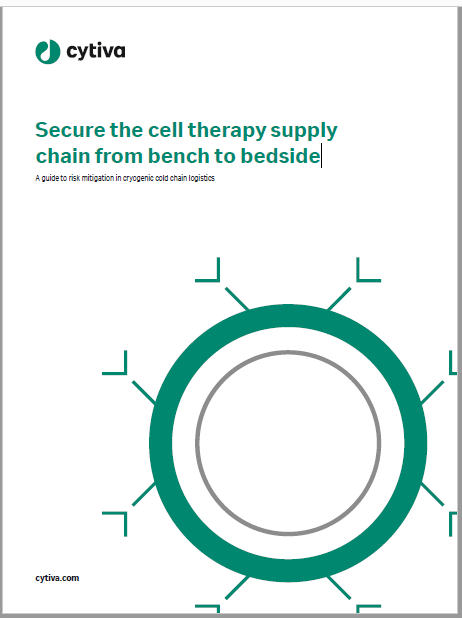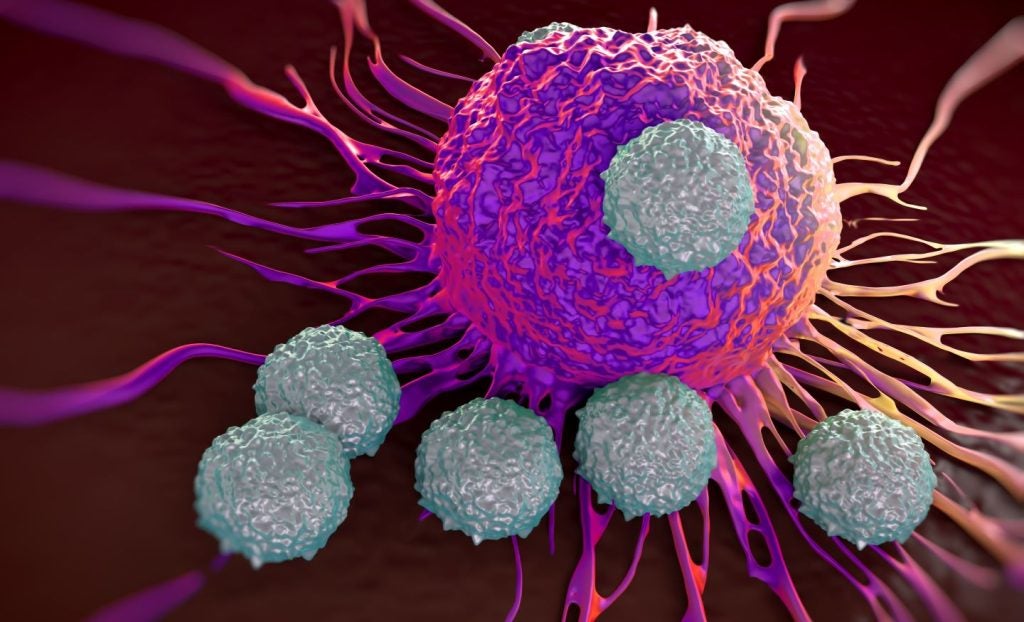When it comes to cell therapies, most companies choose to focus on DNA rather than RNA. Cartesian Therapeutics is a Gaithersburg, Maryland based biopharma firm focused on pioneering mRNA-engineered cell therapies for oncology, respiratory and autoimmune diseases.
Made up of an integrated team of scientists, Cartesian’s vision is to cure disease using mRNA, aiming to engineer any cell to deliver any combination of therapies to any tissue type.
Unlike many other cell and gene therapy companies, Cartesian manufactures all of its therapeutics in-house using its RNA Armory platform. To date, the firm has received around $7 million in funding from grants to develop its clinical pipeline, mostly from the NIH.
Clinical Trials Arena sat down with Cartesian CEO, Dr Murat Kalayoglu to discuss the firm’s unique approach to curing disease and learn more about its current pipeline.
Kezia Parkins: Why have you chosen to focus on mRNA? How does it overcome the limitations of conventional cell engineering, which uses DNA?
See Also:

Murat Kalayoglu: We see some limitations of conventional cell engineering due to the potential for toxicity. DNA-based engineering makes irreversible changes, such that when the cell is modified at the DNA level and administered to the patient and finds its target, it begins to proliferate – every daughter cell looks genetically identical to the parent cell.
How well do you really know your competitors?
Access the most comprehensive Company Profiles on the market, powered by GlobalData. Save hours of research. Gain competitive edge.

Thank you!
Your download email will arrive shortly
Not ready to buy yet? Download a free sample
We are confident about the unique quality of our Company Profiles. However, we want you to make the most beneficial decision for your business, so we offer a free sample that you can download by submitting the below form
By GlobalDataThese cells are often administered at a sub-therapeutic dose and are expected to proliferate into a therapeutic window and then stay there, but the cell doesn’t know to do that. It’ll keep proliferating and often cross a toxicity threshold.
For example, with CAR-T cells, the kind of toxicities one encounters are cytokine release syndrome, neurotoxicity, increased risk of infections and long-term risks of transformation or immunogenicity. That’s why these patients are often monitored for a decade or so to ensure long term safety. That kind of safety profile may be acceptable in using conventional cell therapy to treat the sickest patients, but if you want to take cell therapy beyond advanced cancers you really have to have a different approach.
Our approach is to use RNA instead of DNA. We’re making time-controlled changes and conferring upon the cell drug-like properties and pharmacokinetics where we can control the total exposure and, ultimately, enhance the safety profile so we can use RNA cell therapy to go into frontline cancers and beyond oncology.
The way in which we administer our cells is different. It’s not a one and done type of therapy. We repeat dose patients over some number of infusions, like other drugs and biologics. We also administer more cells compared to conventional cell therapy.
We also don’t require that conventional cell therapies do is what’s called lymphodepletion or lymphodepletive chemotherapy. This is a preconditioning therapy administered or co-administered along with conventional cell therapy and designed to clear space for conventional cells to proliferate into. Since we’re not asking our cells to proliferate, the studies that we’re conducting don’t typically use preconditioning lymphodepletive chemotherapy.
Another benefit is that it’s substantially cheaper to manufacture an RNA cell therapy compared to conventional cell therapy.
KP: Does your therapy have the potential to skirt side effects caused by conventional cancer treatments?
MK: Yes, exactly. For patients that are newly diagnosed, in particular with frontline cancers, there are substantially more alternatives that they can work with and there’s a lot of approved therapies that they have access to. The current paradigm of treating patients is not to begin with the most toxic agents right away, but to try and keep their overall health and still use effective therapies in combination.
We’ve therefore designed our oncology therapies so that they can be used in the frontline setting and play nice with the other existing combinations of therapies.
KP: What promise does RNA hold for treating patients with unmet medical needs?
MK: Ultimately RNA is a mechanism that allows us to be able to engineer cells with a combination of therapies and targeting molecules. The RNA Armoury allows us to engineer cells that encode multiple therapeutics or targeting proteins, using the cell as both a factory for producing and a vehicle for targeting multiple therapeutics right to the site of disease.
We can use this approach to go after immune diseases, cancers, respiratory diseases, and in the future potentially cardiovascular diseases and neurology. Being a small biotechnology company, we have to take baby steps. We’ve focused a lot of our attention to date in laying the foundational work around this platform technology and are beginning to get into clinical trials now to test out some of these hypotheses in the clinic.
KP: Why do you think many companies have neglected the potential of RNA-based therapies and mainly focused on using RNA for vaccines?
MK: Conventional RNA therapies are delivered by encapsulating the RNA in a nanoparticle and then administering it directly. One of the main issues that people have encountered using that approach for RNA as a therapy is that both the RNA and the nanoparticle in which its encased are often immunogenic – they induce a very strong immune response that ends up clearing the RNA therapy out before it can insert its potential beneficial effect. That’s why you see a lot of work in leveraging that immunogenicity property of an RNA therapy for the purpose of generating a vaccine because in the vaccine you want to have that huge immune response against your product to mount an attack against the protein that the RNA is encoding.
Because of that immunogenicity, the therapeutic potential has been a challenging aspect that people have spent a lot of time trying to overcome. The inherent benefit of a cell-based approach, where you’re putting the RNA not in a nanoparticle but rather into a cell, is in its capacity to take the RNA, translate proteins and then be able to deliver a combination of these proteins right to the site of disease.
You have much better control over that process when you’re engineering these cells outside the body. You can activate them and manipulate them and then reintroduce them back into the body, where they can target a given site of disease to continually produce the therapy. You can re-administer your product over and over to continue achieving a benefit. We like to think of RNA cell therapy as borrowing the best from conventional cell therapies with DNA, as well as the best from the conventional RNA nanoparticle-based therapies.
KP: Can you tell us a bit about your leading candidates and how they are doing in clinical trials?
MK: We currently have three assets in clinical trials. We think about our pipeline in the context of generations of therapies. Our first-generation programs are represented by Descartes-08, which is targeting an autoimmune disease called generalized myasthenia gravis and Descartes-11, which is targeting patients with newly diagnosed multiple myeloma who have high-risk genetic characteristics.
Those are first-generation programs because they’re engineered with one RNA which encodes a protein named a CAR (chimeric antigen receptor). That allows the T-cell to go and target a multiple myeloma cell that is expressing a protein called B-cell maturation antigen B cell BCMA.
Our second-generation program is Descartes-30, which is engineering a mesenchymal stem cell. This is an allergenic therapy with two different proteins/enzymes that work synergistically to degrade neutrophil extracellular traps (NETs). NETs are key drivers of pathogenesis, not just in acute respiratory distress syndrome (ARDS) but in a whole slew of other diseases, including other autoimmune diseases like lupus and cardiovascular diseases like ischemic reperfusion injury stroke.
Then we have our third-generation programs, which are all preclinical but are expected to matriculate one after another over the next 12 to 18 months into the clinic. Those are triple-engineered with three or more different therapeutic proteins that are either secreted or added to the cell membrane. That then allows these cells to get targeted right to the site of disease.
Each of these three candidates are in early-stage clinical studies. Descartes 8 is enrolling patients with generalized myasthenia gravis at multiple sites in the US and we’re now expanding this study internationally in a Phase I/II study.
Descartes 11 is currently enrolling both US and international patients with newly diagnosed multiple myeloma that have high-risk genetic characteristics. This is an early-stage Phase IIa study that allows us to enrol patients who are completing their initial induction therapy, but before they’ve had a stem cell transplant.
We are also enrolling patients with moderate to severe ARDS for Descartes-30, including but not limited to patients with Covid-19 ARDS, whether they’re infectious cases or non-infectious. That study is also enrolling in the US and internationally.
KP: What are the benefits of conducting all therapeutics in-house using Cartesian’s RNA Armory platform?
MK: Compared to making a small molecule or even a biologic, developing a cell therapy is a far more difficult process because these are living cells that are being engineered. When we first got going we thought about the potential benefit of outsourcing our manufacturing, but as we tested out some of our hypotheses in the clinic we found that it made a lot of sense for us to bring everybody here in house.
We have more advanced degrees than we have employees here. Our manufacturing team is very atypical relative to how a contract research organisation (CRO) might populate their manufacturing employees. All our workers are scientists and have MDS, PhDs or MD PhDs. They are learning and extracting as much information as possible from every manufacturing run to continue and iteratively optimise our process over time.
As processes get locked in we’re looking to transfer certain methods and scale up. Then we will have to make a decision as to whether we can do that here in-house and expand, or whether we begin working more closely with outside partners.
KP: What do you see for the future of RNA therapies?
MK: It has safety benefits over standard approaches. It can use the cell as a factory for producing over an extended period, plus the benefit of being able to target these therapies directly to the site of the disease. It can take in, without a meaningful cargo limit, multiple therapies and deliver combination therapy to target myriad diseases that extend beyond oncology.
There’s a virtually limitless number of conditions you can go after, whether they be in the kind of areas we’re focusing on or in dermatology, rheumatology, neurology or trauma. Virtually anything that is targetable with a combination therapy, where you can get cells to target a given set of proteins and different nodes within a mechanism of disease, could be treated with RNA cell therapy.
I think that those attributes make for a very bright future for RNA cell therapy.
Cell & Gene Therapy Coverage on Clinical Trials Arena supported by Cytiva.
Editorial content is independently produced and follows the highest standards of journalistic integrity. Topic sponsors are not involved in the creation of editorial content.






